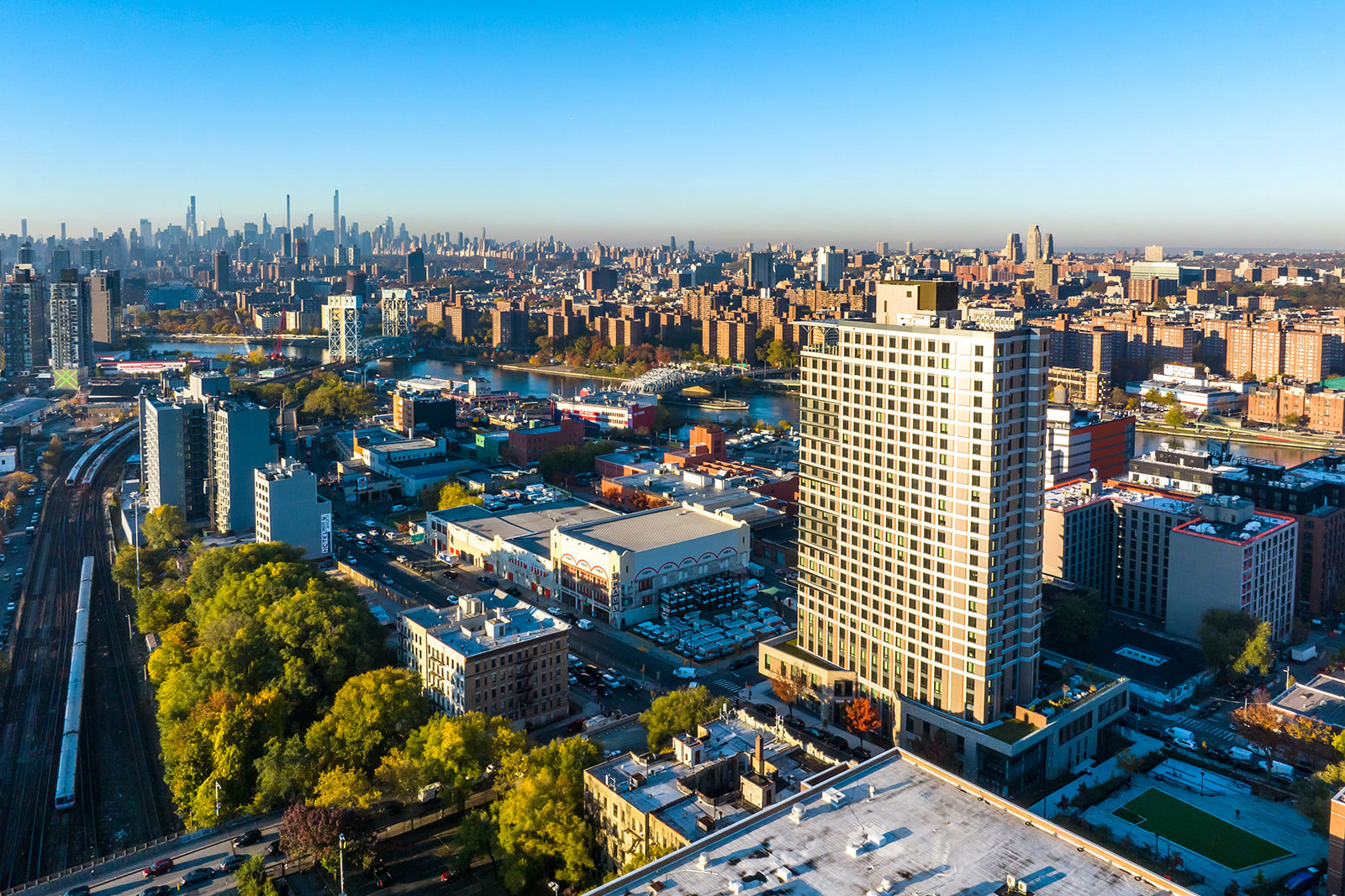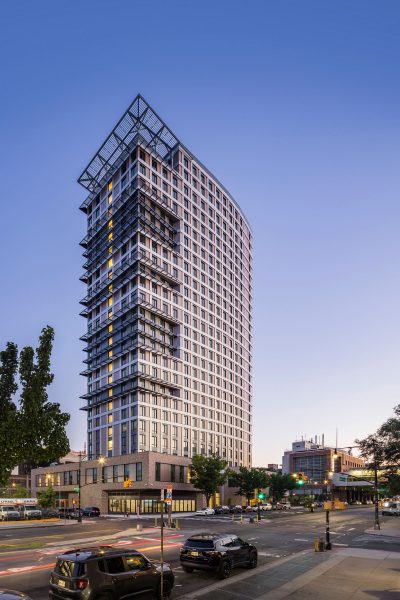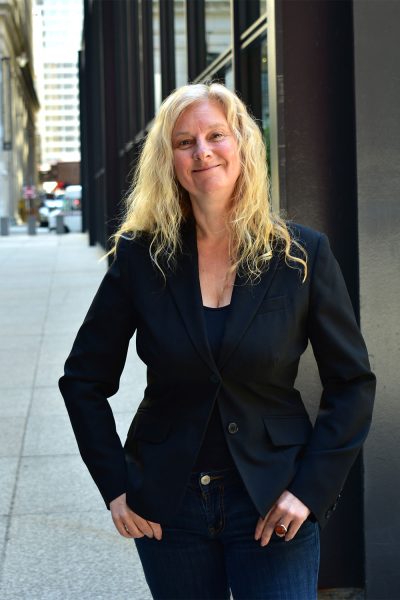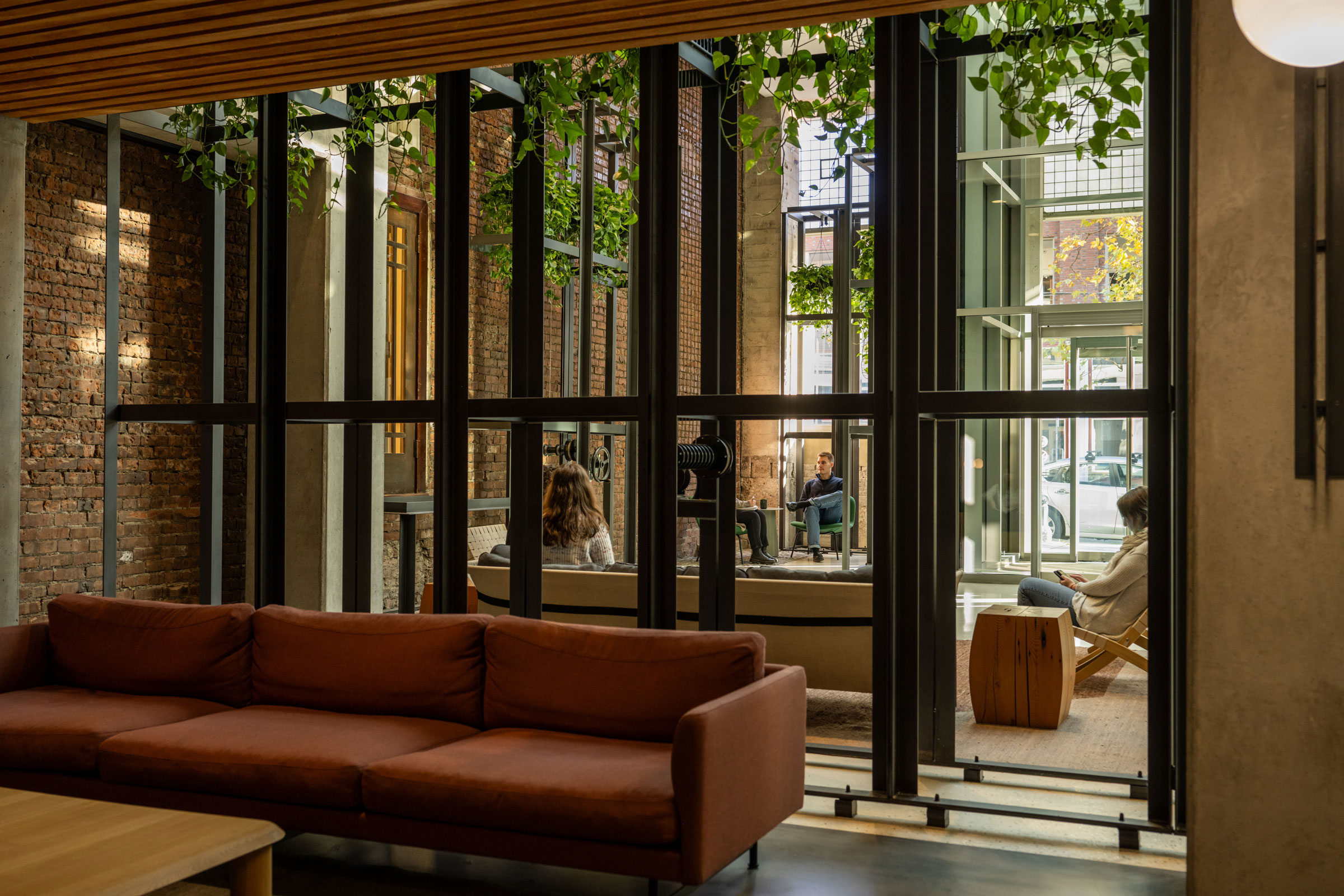Story at a glance:
- In 2025 Phius certified the most buildings in a single year since its founding in 2007, with more than 100 across the US.
- Phius-certified project 425 Grand Concourse in the Bronx is the largest Phius development to date, as of November 2025.
Phius’ passive building standards are being implemented nationwide across affordable housing as well as historic retrofits and public developments. The year 2025 has been a busy one for the nonprofit behind the leading passive house building standard, as they inform municipal policy and educate builders, architects, and other industry professionals around what it takes to make buildings livable through heat waves, smoke, and outages, without increasing grid strain.
While cost and education continue to be hurdles in the quest to increase the number of passive house–certified buildings in the US, interest is growing rapidly, especially as some states incentivize passive house programs, says Katrin Klingenberg, cofounder and co-executive director of Phius.
“We broke through this with education—training the architects, the builders, and the verifiers. All of a sudden there were entire construction companies who sent like 40 people to the builders training,” she says of the work happening this year in Massachusetts, just one example. “Once this became a thing in Massachusetts people were really proud and they were like, ‘This is not rocket science. You just need to take care, specify the right things, and make sure you install it correctly and test and verify.”
Education is a big deal for workforce development, Klingenberg says, and efforts like those in Massachusetts also help to reduce the cost of building to passive house standards. “Once everybody is doing it, the cost plummets; it becomes normal. And once people know it’s not threatening and know how to do it, they don’t give you outrageous bids to cover perceived risk.”
- The 425 Grand Concourse development implements high efficiency building systems with an air-tight building envelope, energy recovery ventilation, and sustainable features to significantly reduce heat loss and gain. Photo by Albert Vecerka, courtesy of Dattner Architects
- Phius cofounder Katrin Klingenberg. Photo courtesy of Phius
Phius-certified project 425 Grand Concourse, designed by Dattner Architects, in the Bronx is the largest Phius development to date, with 277 units of affordable housing and consuming up to 70% less energy than conventional buildings via an airtight building envelope, energy recovery ventilation, and other sustainable strategies. “For a high-rise in the Bronx that is really amazing,” Klingenberg says.
The certification work Phius is doing comes from their efforts to get passive affordable housing in all states as part of Qualified Allocation Plans (QAP). As part of QAP, state housing agencies receive federal funding for a program called the Low Income Housing Tax Credit Program. This program provides needed funding to encourage developers to build affordable housing.
New York City thought these efforts in particular were a great idea, as they were looking to design their own zero energy standards. “They said, ‘What if we incentivize your trainings to build a workforce? What do you think about potentially then shifting our funding toward direct cash incentives?” Klingenberg says.
“Then it slowly built up through affordable housing developers who saw the benefit for multifamily. And of course they have a reason to maintain their buildings, and they will harvest the energy savings. They were perfectly positioned for this.” Chicago has also included Phius in their city’s zero energy plans.
Developers want their people to be healthy and their buildings to be resilient, too, Klingenberg says. Massachusetts is currently developing code that would require all multifamily buildings larger than 12,000 square feet to be built to passive house standards. That is currently in the “stretch code” phase, so people can opt in. “If that goes well and people don’t push back, then it becomes code in two years,” Klingenberg says.
Currently more than 50% of the Massachusetts population has opted in, she says, including Boston. Of course, she says, Massachusetts sees the benefits in building to passive house standards and was providing financial incentives to build sustainably even before the stretch code, Klingenberg says. “This is really a state that is daring to lead and showing that this is totally practical and doable and feasible.”

425 Grand Concourse balances the critical need for affordable homes and the need for a high-quality and attractive development that promotes street activity. Photo by Albert Vecerka, courtesy of Dattner Architects
When a housing developer chooses Phius as one of their green pathways, they also become more competitive, Klingenberg says. “They get more points, and they potentially get funding easier than if they don’t do it. That’s the incentive here.”
The next step is to incentivize training, she says. She uses New York as an example, as they offer 50% subsidies for training. Phius training to become a Phius Certified Consultant, or CPHC, costs about $2,000, and New York foots half the bill.
Passive buildings are also more affordable in the long run, Klingenberg says. “The utility bills are low, they’re super efficient, and for multifamily we see 40 to 50% savings, which is pretty amazing. If you’re an operator for buildings like this that makes a big difference.”
And who wouldn’t want a stronger, healthier building with improved air quality? “We can all agree that we want to keep our families safe,” Klingenberg says. “Storms are getting stronger, and we want to build buildings that safeguard families and our belongings. We don’t want to have to leave our buildings, so we want resilient buildings that keep us safe when the temperatures go really high or really low or when the humidity skyrockets.”
Properly built passive buildings are durable, keeping occupants and property inside safer, and they also lead to less maintenance, Klingenberg says. “There’s real science to it, to build it correctly so you have a healthy building that is consistently comfortable and warm on all surfaces.”





